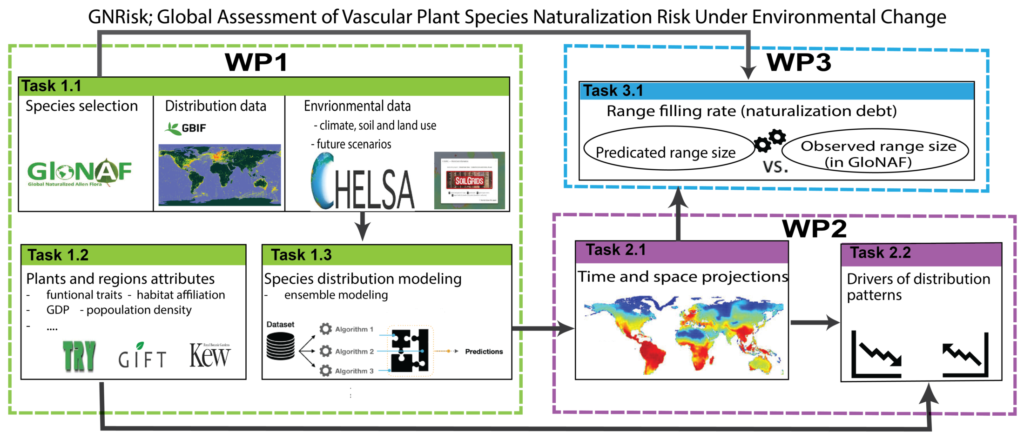The considerably accelerated intentional and accidental translocation of organisms has led to ever-growing numbers of alien species. According to the most comprehensive database of alien plants, GloNAF, to date over 16,000 plant species managed to naturalize somewhere around the globe. Intensifying global changes (e.g., climate, land-use) are known to be major drivers of invasions, and – depending on future trajectories of change – will likely become even more important. Thus, investigating the role of environmental changes in current and future distribution of alien plant species is a priority for research – and proactive management of biological invasions.
We aim at improving our understanding of the current and future distribution patterns of the global naturalized alien plants under environmental change. Specifically, this project outlines three specific objectives: 1) assess the current and future potential distributions of the GloNAF; 2) relate these distribution patterns to plant attributes and functional traits; and 3) assess the role of climate and plant characteristics on the global patterns of niche unfilling (i.e. naturalization debts). The project’s methodology involves employing sophisticated ensemble species distribution modeling techniques, utilizing updated species occurrence data and high-resolution environmental data for both current conditions and future projections (2100).

This project is poised to deliver the first comprehensive environmental suitability modeling of the global naturalized alien flora. Ultimately, this project promises to provide crucial insights into the patterns and drivers of biological invasions, contributing significantly to our understanding of this ecological phenomenon.

